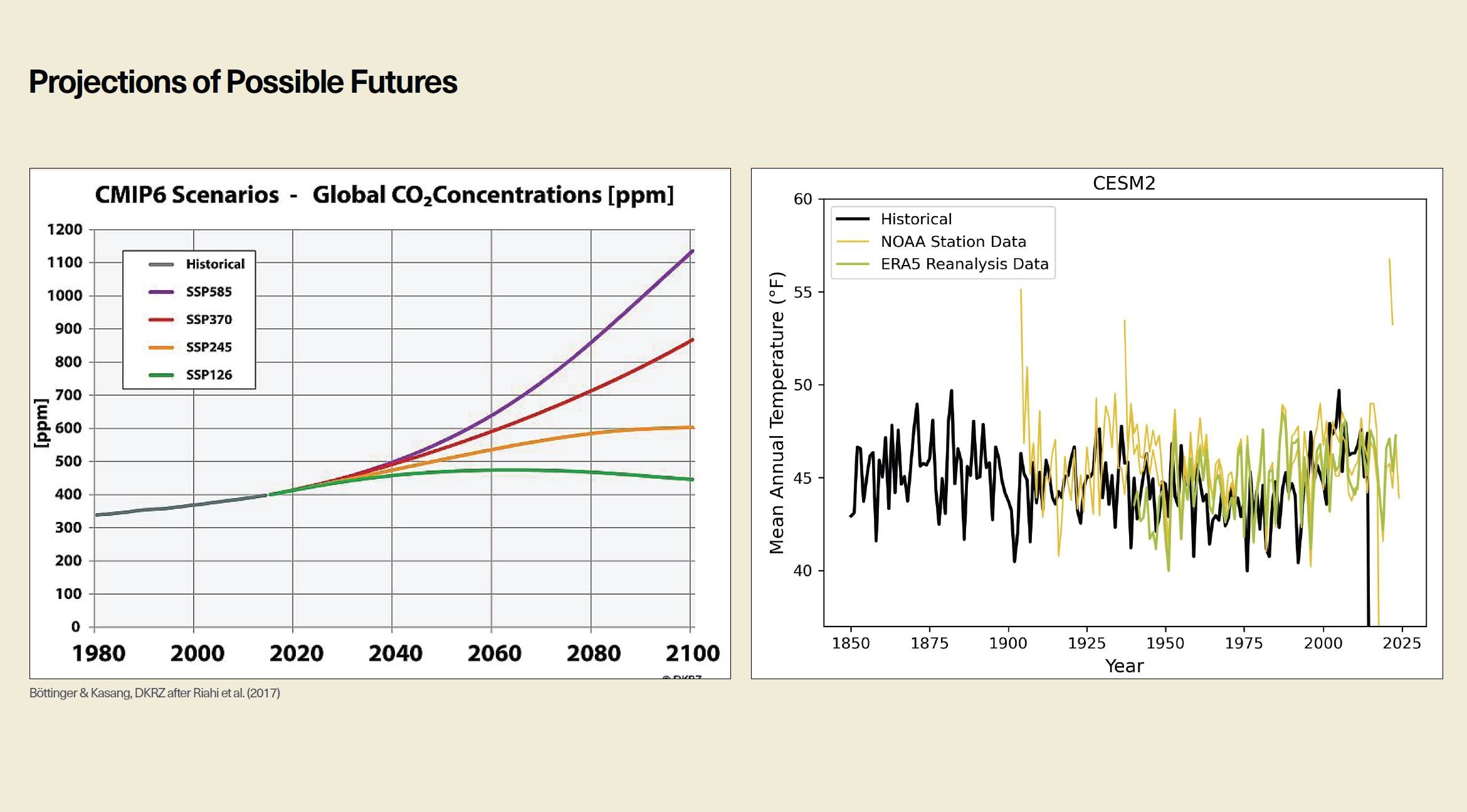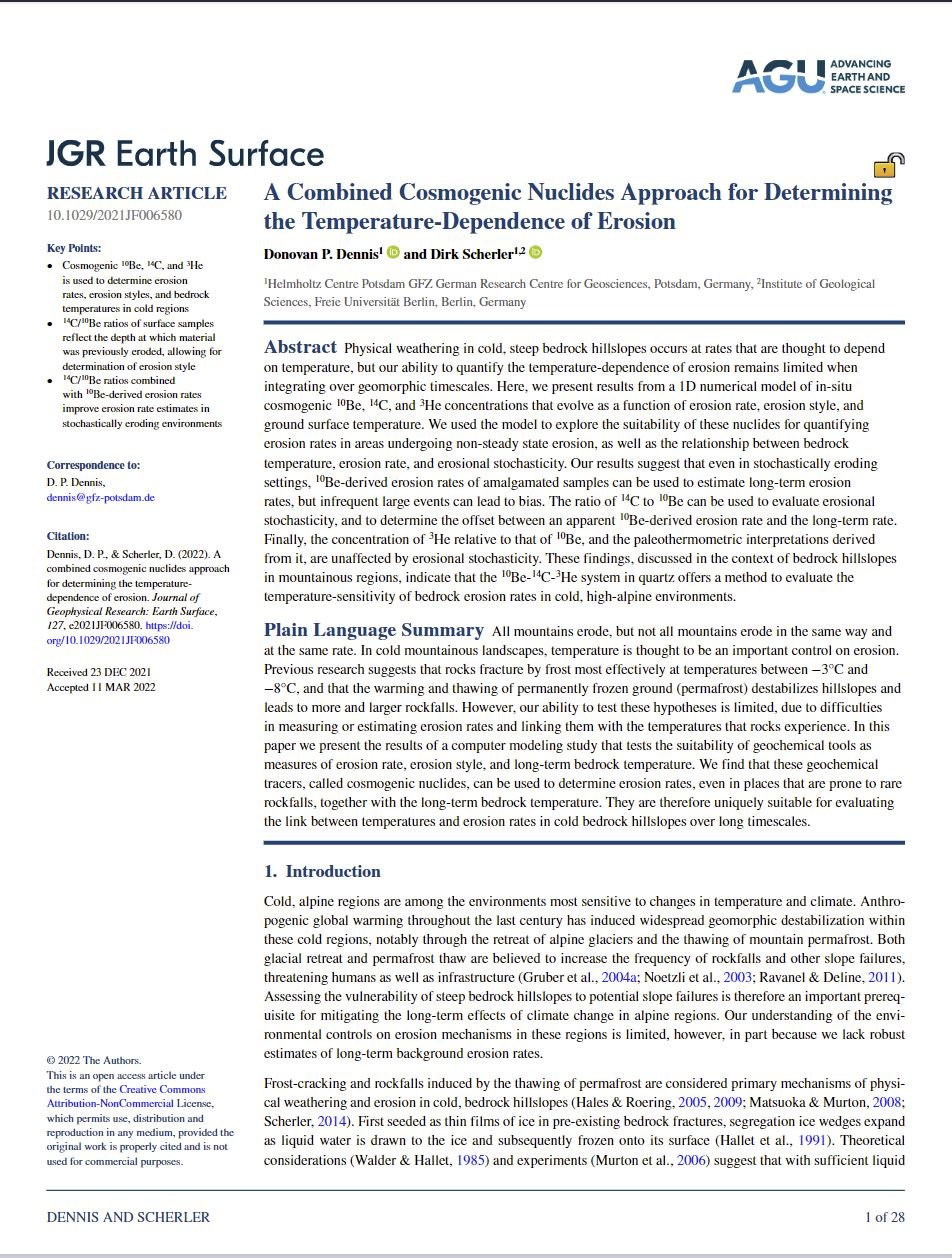New commentary for Nature.
After defending my PhD in January 2025, I wrote a commentary for Nature magazine’s “World View” column on best practices for when things go wrong in the PhD, drawing on my experience as a graduate student (the first time around) at Boston University.
Policy brief with the European Commission’s Joint Research Center released.
Following a two-day workshop in Brussels in Nov. 2024, we released with colleagues from across Europe and at the European Commission’s JRC a policy brief for the European Commission on the risk of crossing critical thresholds (tipping points) in the Earth system, highlighting the unique vulnerabilities facing Europe.
Defended my PhD Thesis!
In January 2025 I defended my PhD thesis on temperature controls on erosion in cold, glacial hillslopes of the European Alps. The work investigates whether temperature impacts the rate at which hillslopes erode, and including a discussion around the possible consequences of present anthropogenic warming for mountain permafrost regions.
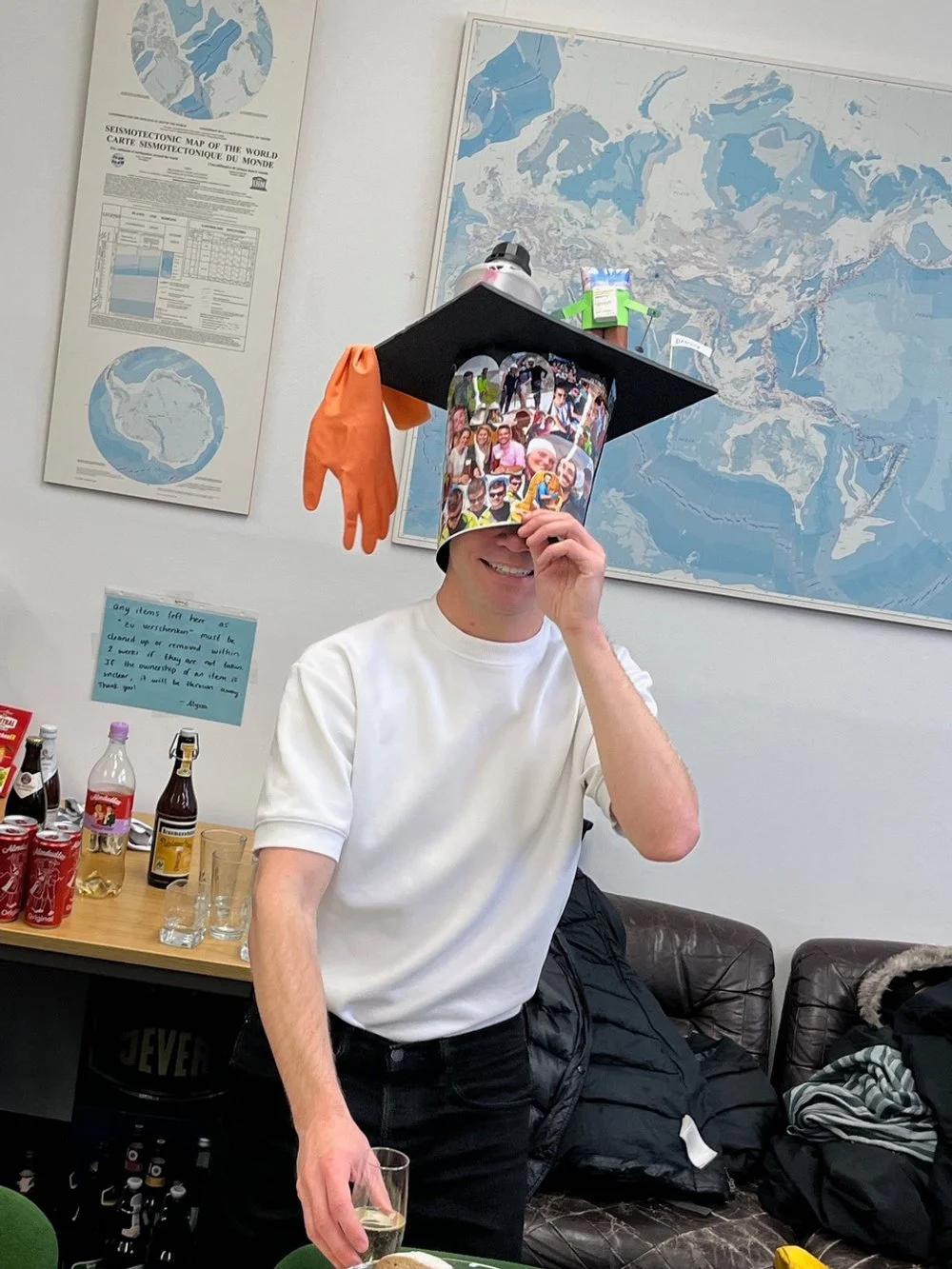
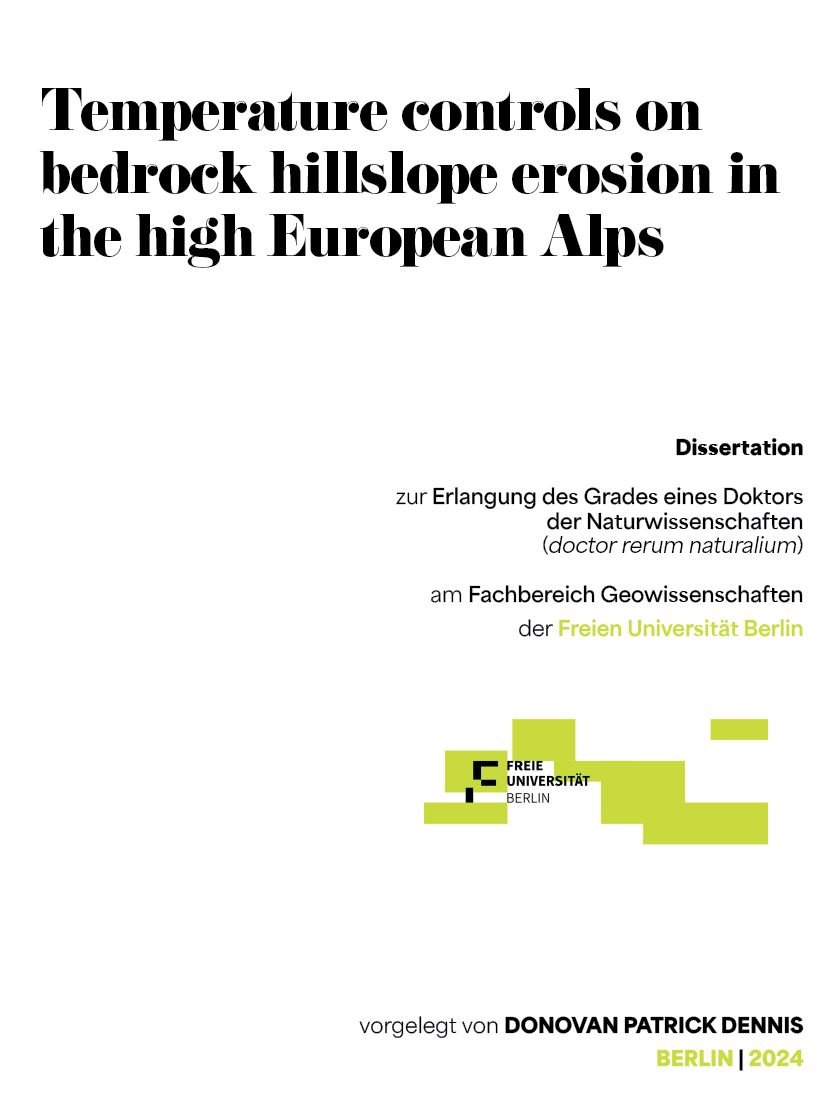
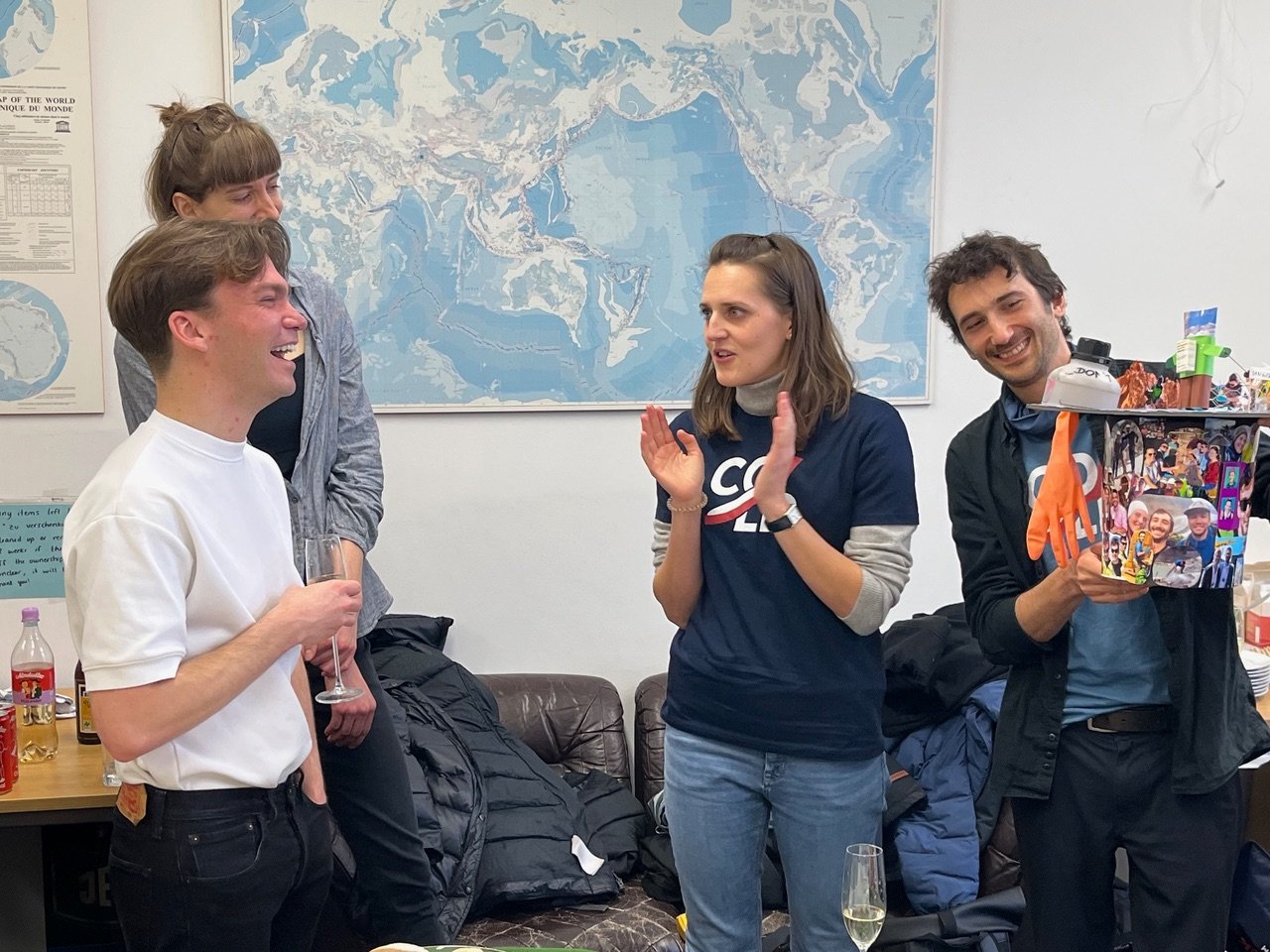
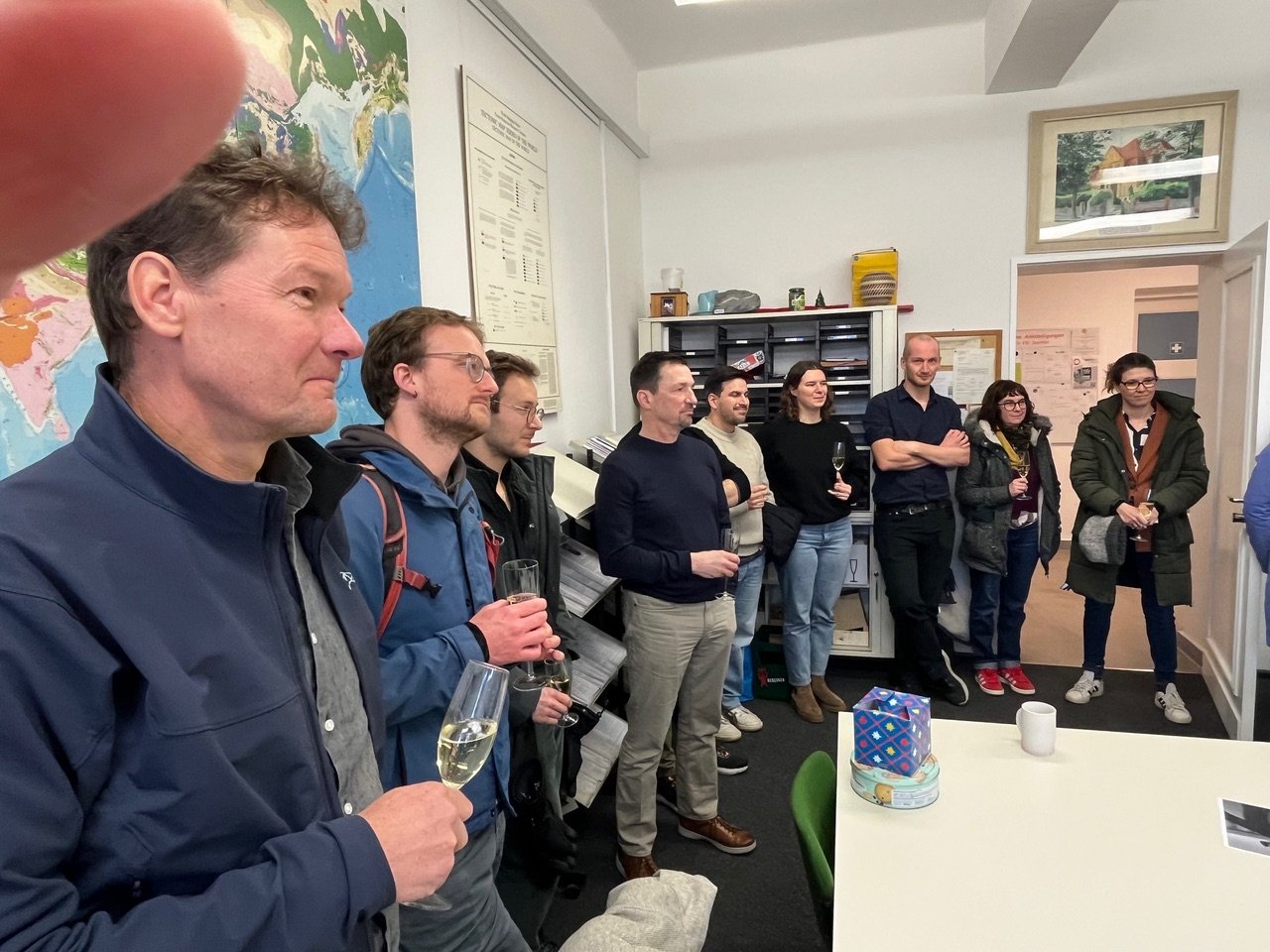
Presentation at the C.M. Russell Museum on Landscapes of the Future, in Great Falls, MT (USA)
I presented a discussion on the relationship between climate, cultural heritage, and intangible natural heritage at an art museum in my hometown of Great Falls, Montana. The presentation is in anticipation of future collaboration on the impacts of climate change in Montana, as visualised in the works of C.M. Russell.
TIPMIP Poster at the EGU General Assembly (2024).
Just a nice (and clever) poster I designed outlining TIPMIP for the EGU Meeting in Vienna (2024).
New essays out in Washington Square Review and Hippocampus.
Two recent bits of memoir now out: “In the Senate, We Read Dante, and I Love Him,” published in Hippocampus Magazine, and “Pillow Talk,” now out in NYU’s Washington Square Review.
Just out in Journal of Geophysical Research: Earth Surface (open access)! Using a numerical model, we demonstrate how the cosmogenic nuclides C-14, Be-10, and He-3 can be used to determine the erosion rate, erosion style, and long-term bedrock temperature in cold, high-alpine regions. We demonstrate that erosional stochasticity may bias erosion rates inferred from Be-10, but that this bias can be identified and accounted when measured against C-14. We likewise show that He-3 retention (used to infer long-term paleoclimate conditions) is not biased by erosional stochasticity.
GFZ PhD Day Video (2021)
At the annual PhD-day, I presented this short video introducing the work I’ve completed on my project so far.
STochastically-Eroding IN-situ cosmogenic nuclide (STEIN) model
vEGU General Assembly Digital Poster (2021)
Digital poster for the vEGU (all-digital) General Assembly meeting in 2021. Clicking the image brings you to the primary presentation, a 15-minute video where I present data from the Aiguille du Midi, and our findings regarding the temperature-dependence of erosion at that site. (Click image for presentation).
AGU Fall Meeting “GeoGram” Digital Poster (2020)
“At” the entirely-digital American Geophysical Union (AGU) Fall Meeting in 2020, I presented findings about erosion rates, rockfall frequency and the temperature dependency of erosion in permafrost hillslopes using 3He, 10Be, and 14C. Within the framework of the online poster software, I organised the poster presentation as a series of posts on “GeoGram”—an imagined social media platform just for geosciences, which mimics a well-known photosharing app. The poster was intended for a broad, (geo)scientific audience.
The “posts” were shared by different users/personalities: mtn-permafrost-pro, the main personality, which introduced the subject, the findings, and the broader impacts; cosmogenics-on-tap, which outlined the basics of cosmogenic nuclides; and master-script-, stochastastic-script-, and code-runner, which introduced the various components of the numerical model I wrote, and which we used to interpret our data. The posts are organised here thematically from top to bottom, left to right, as in a research presentation: Introduction, Methods, Discussion/Conclusion, (Further Work), and Acknowledgements.
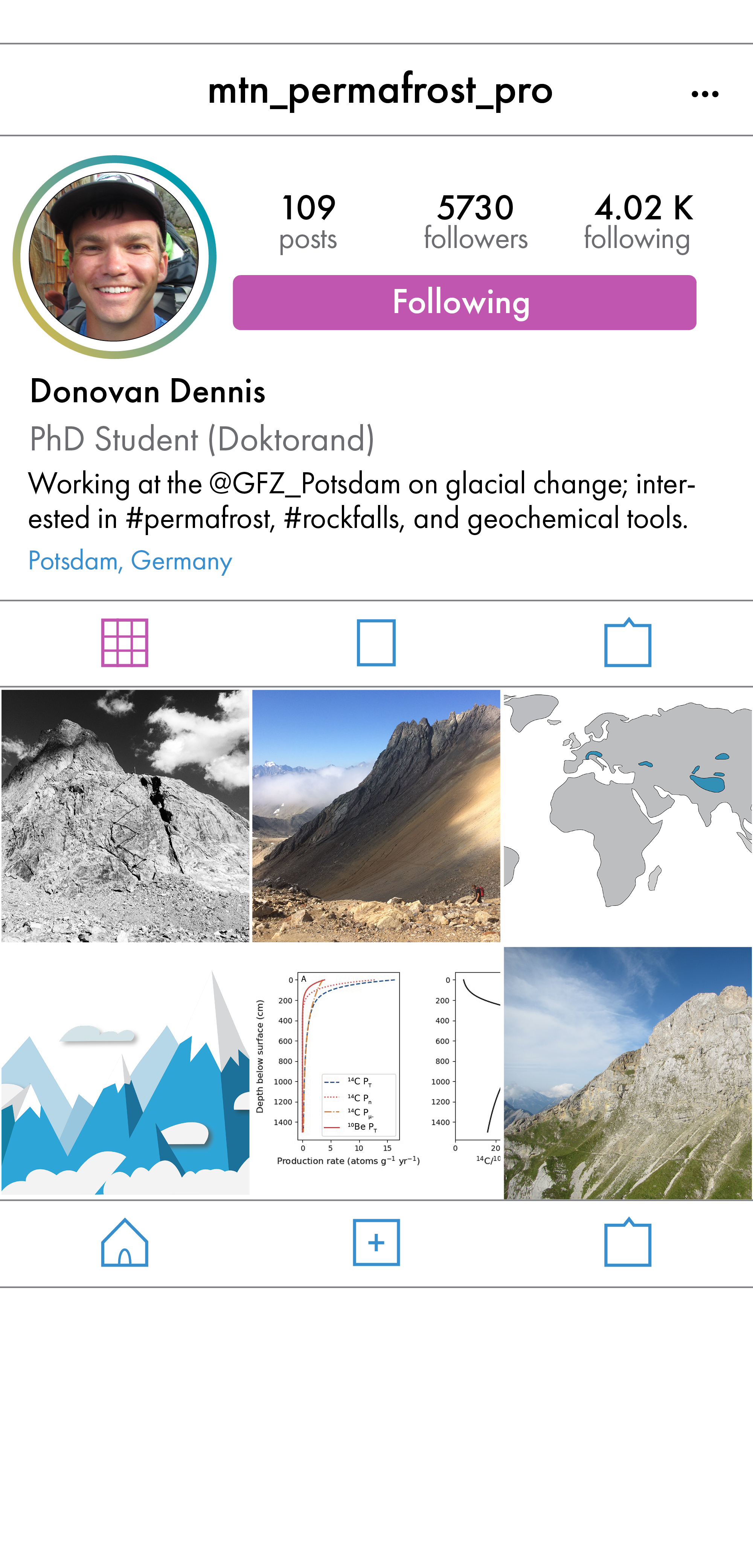



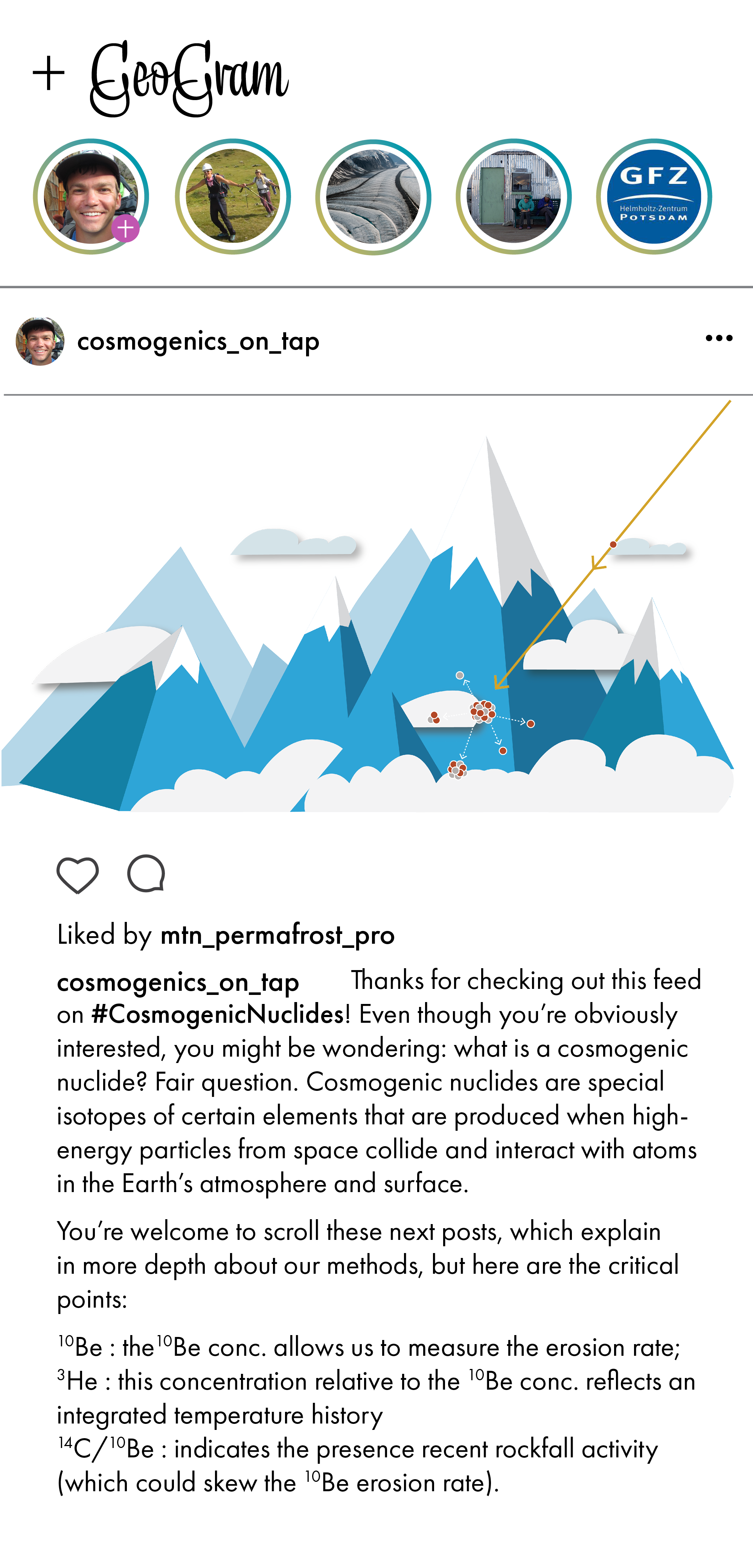
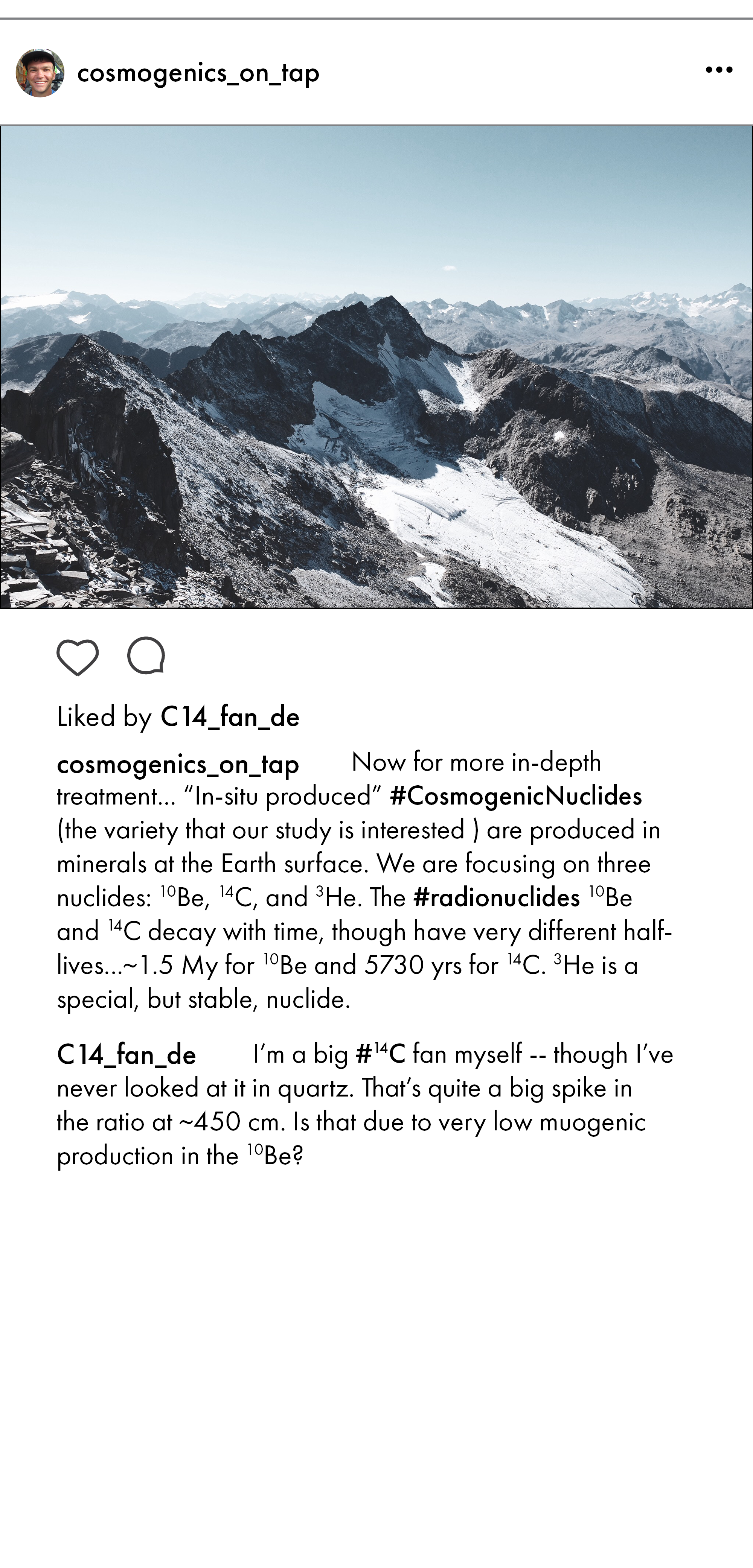
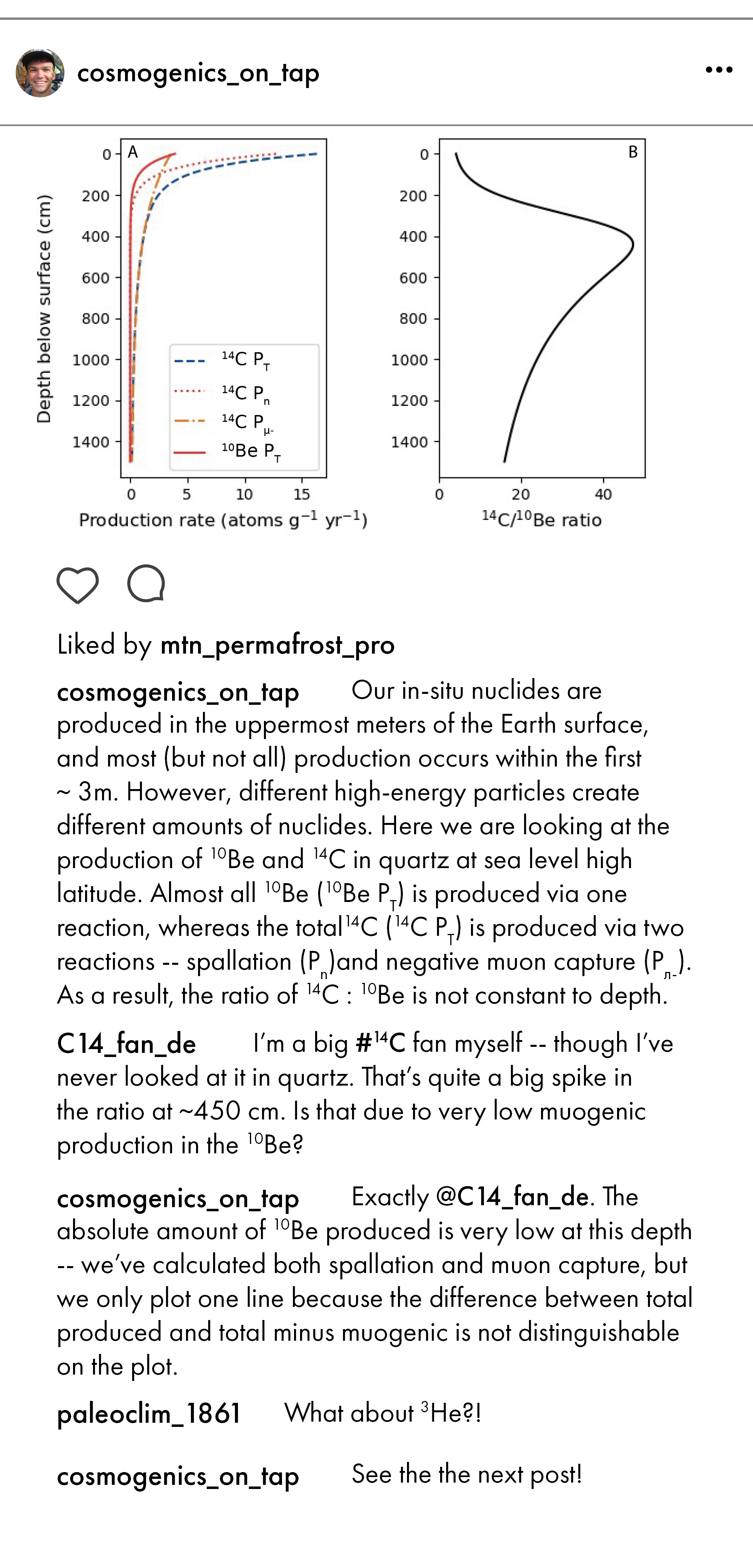

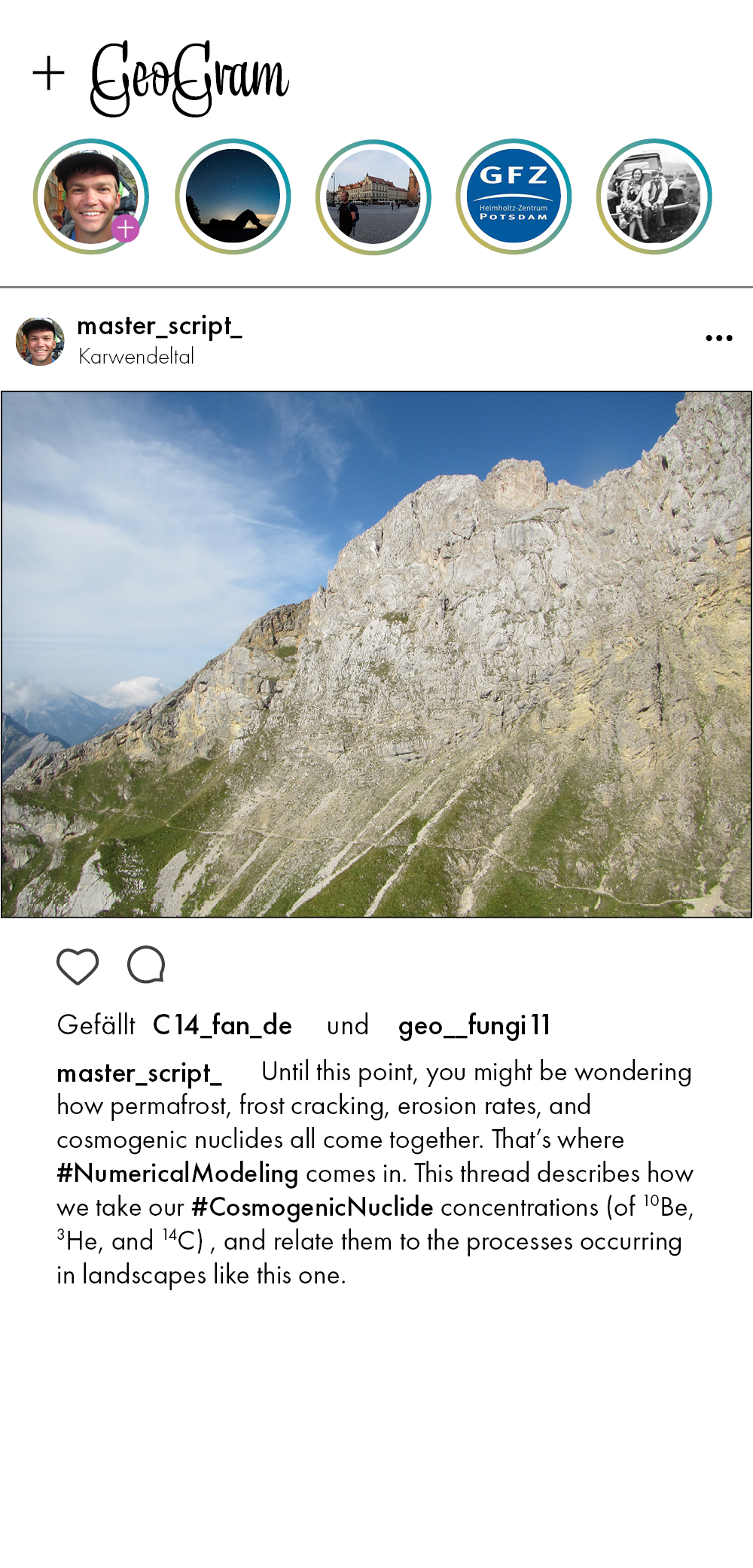
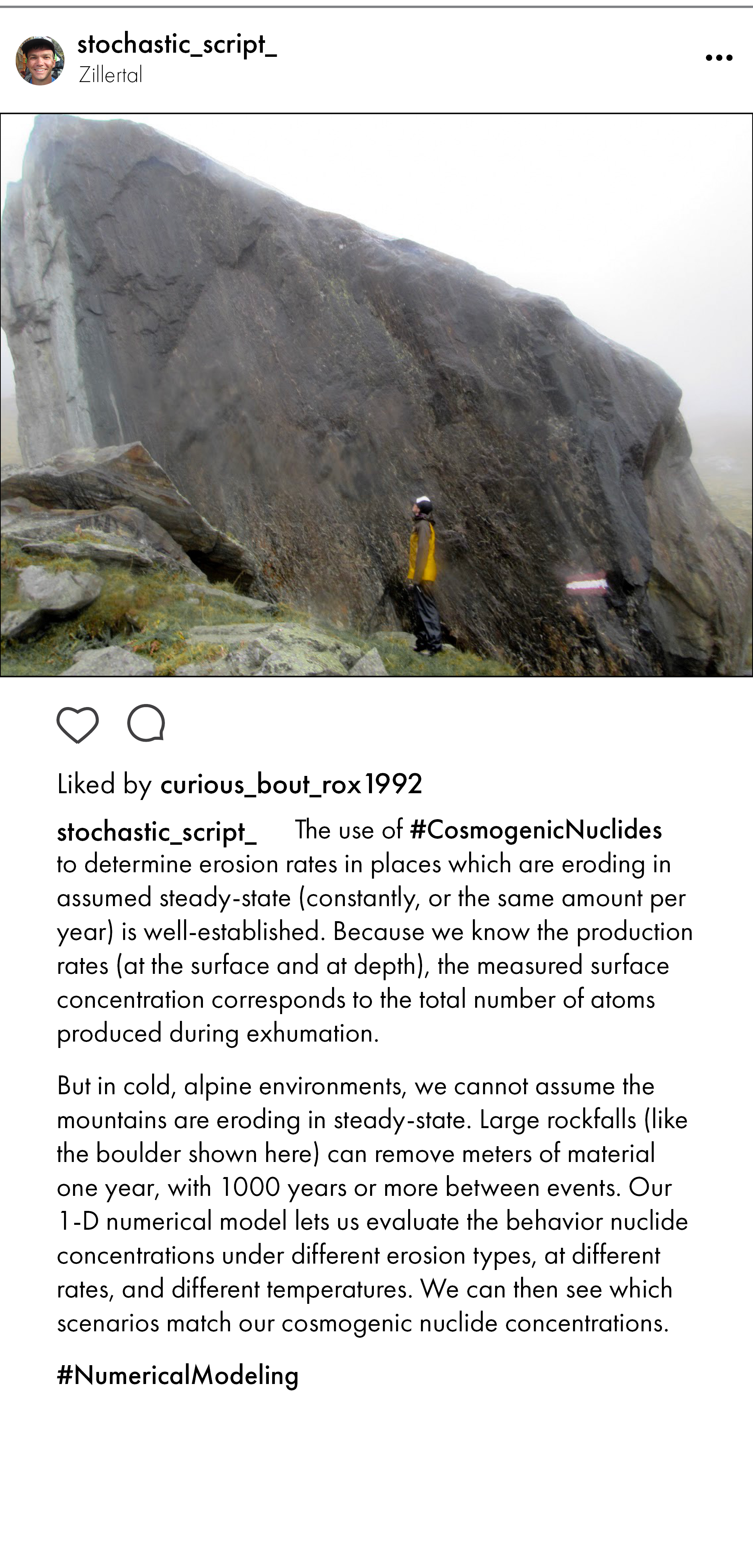
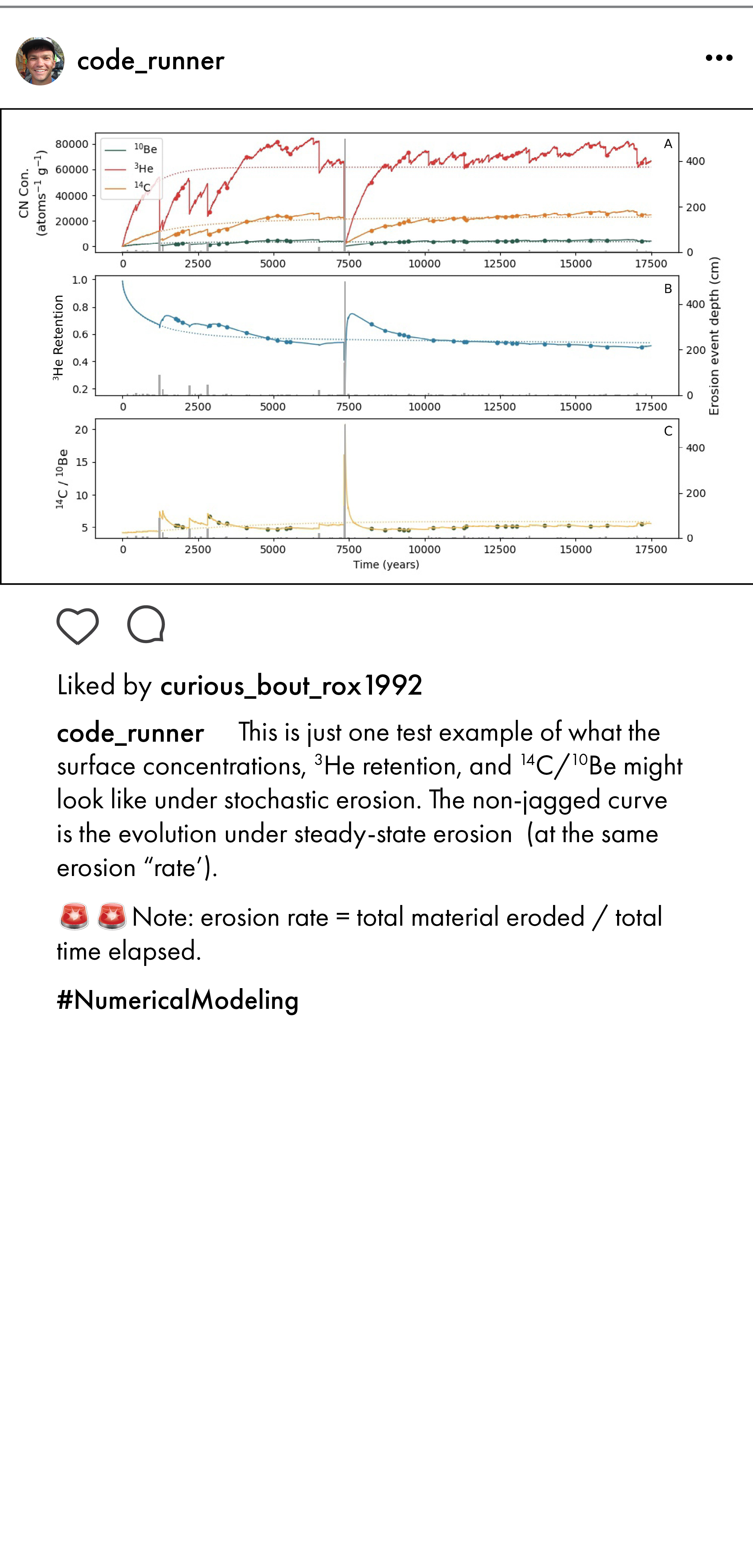

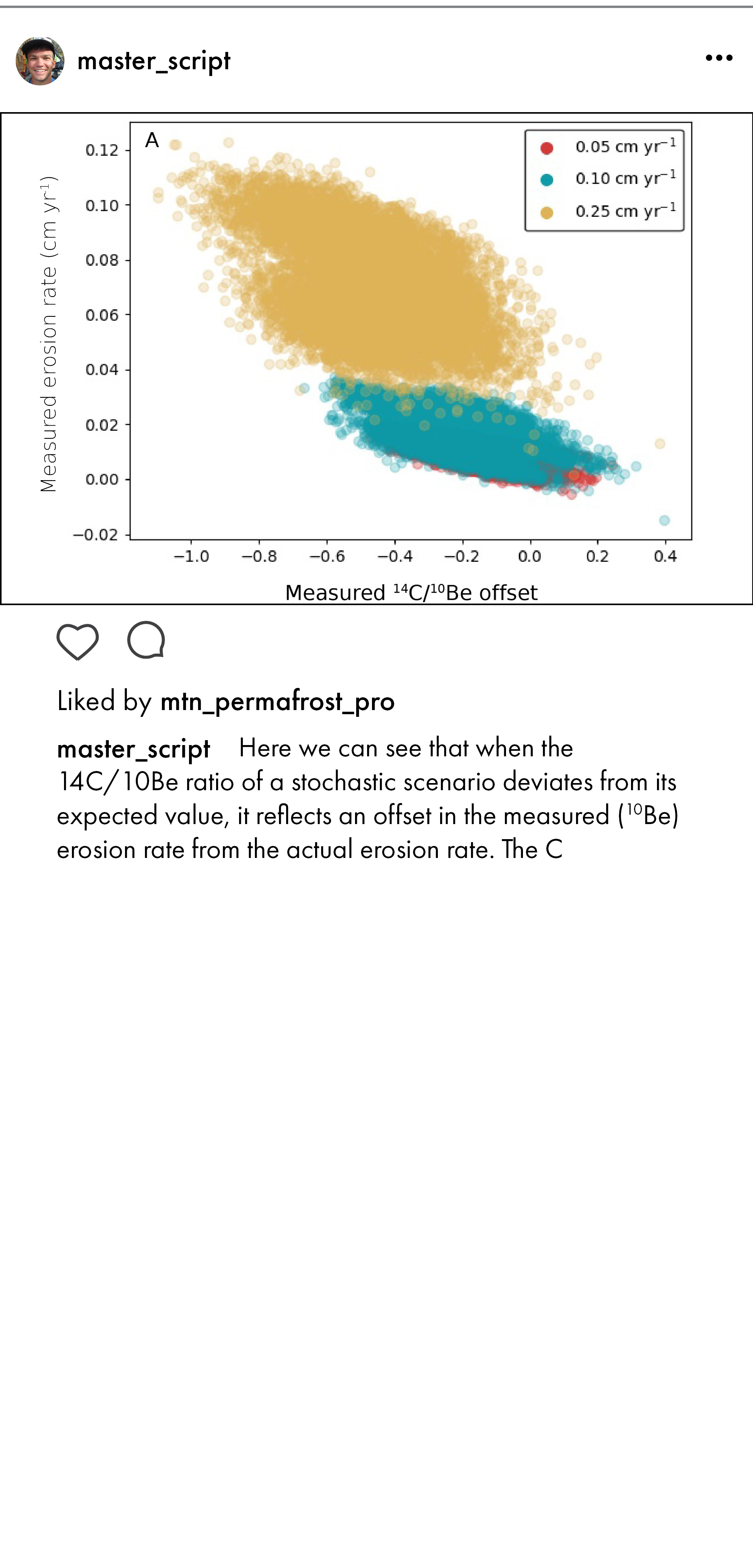
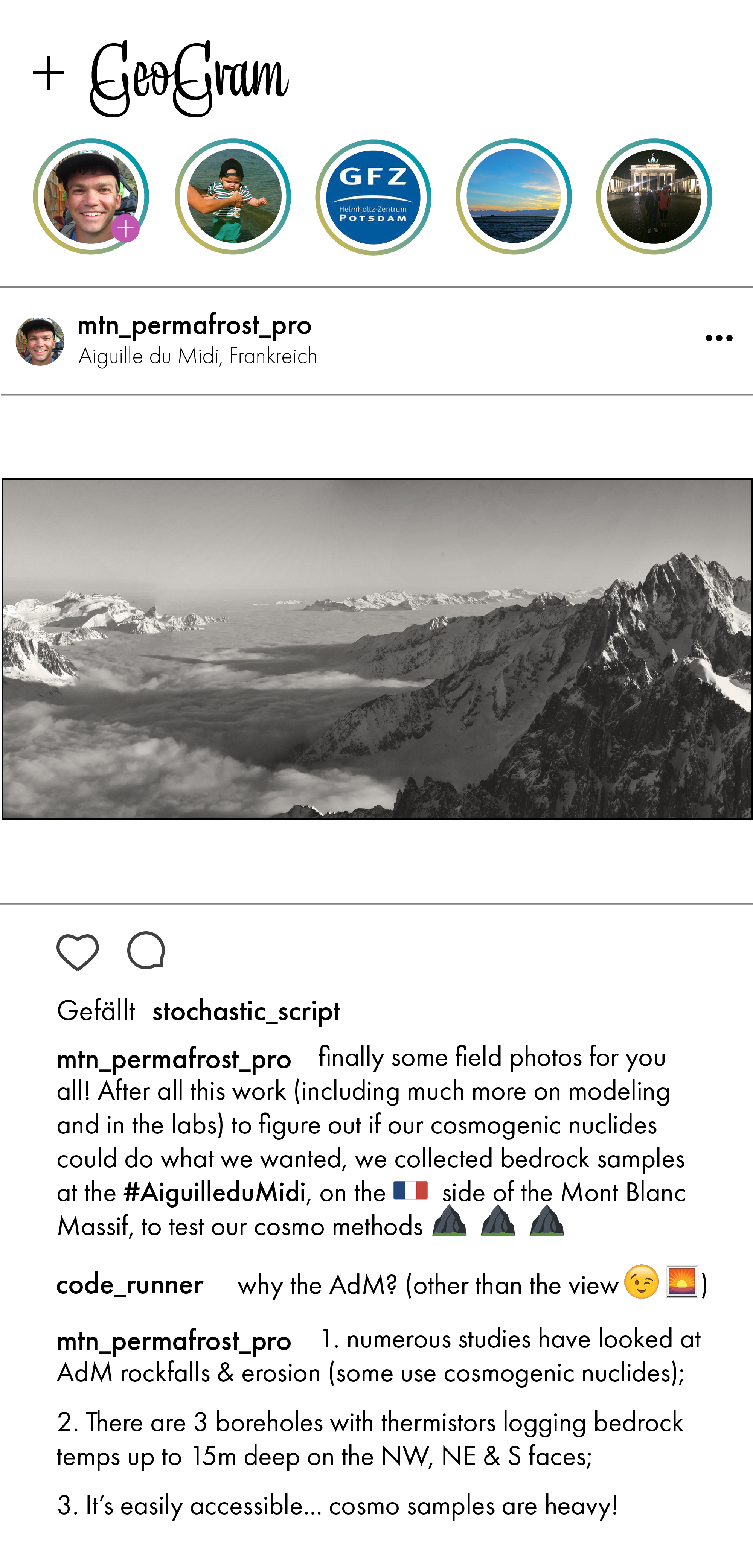

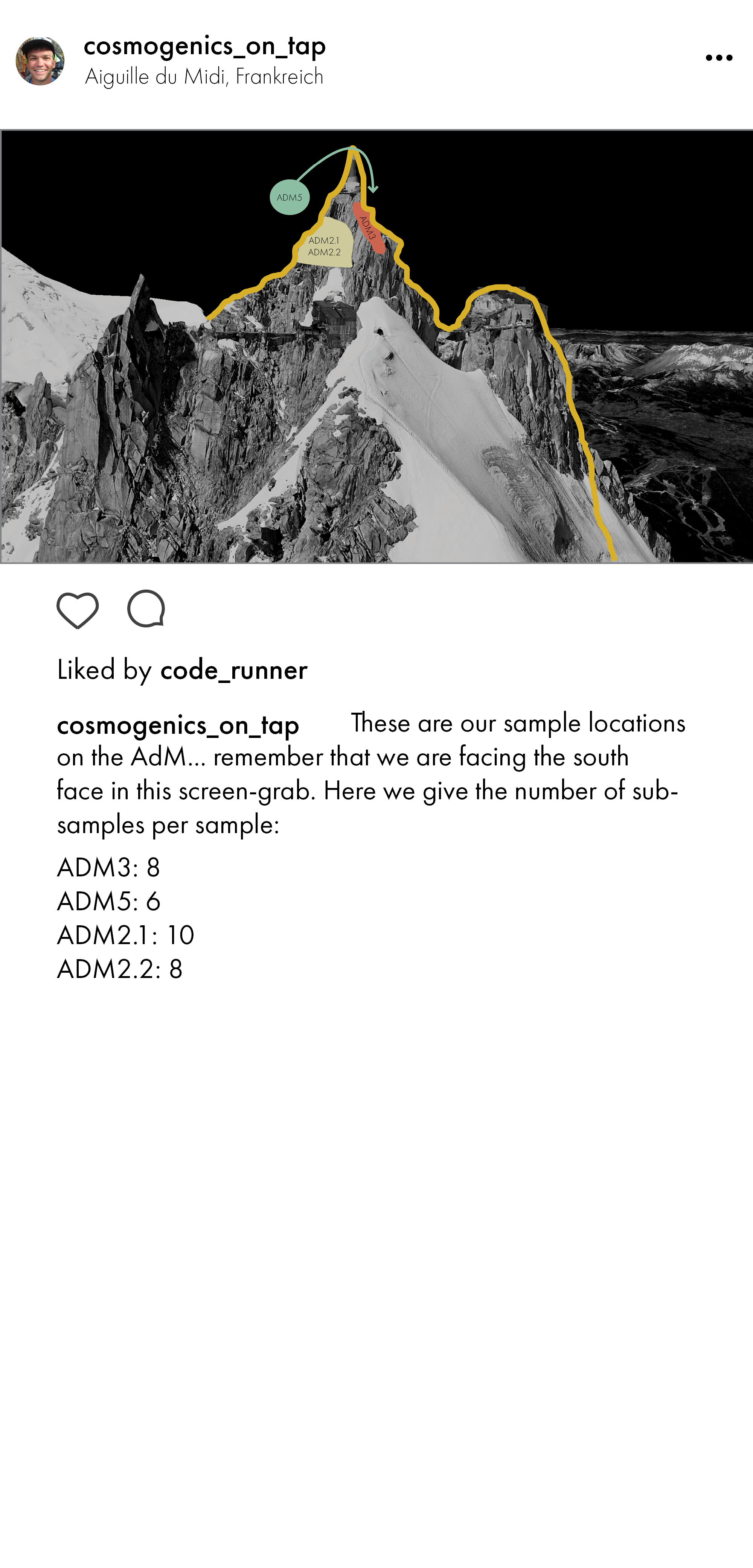
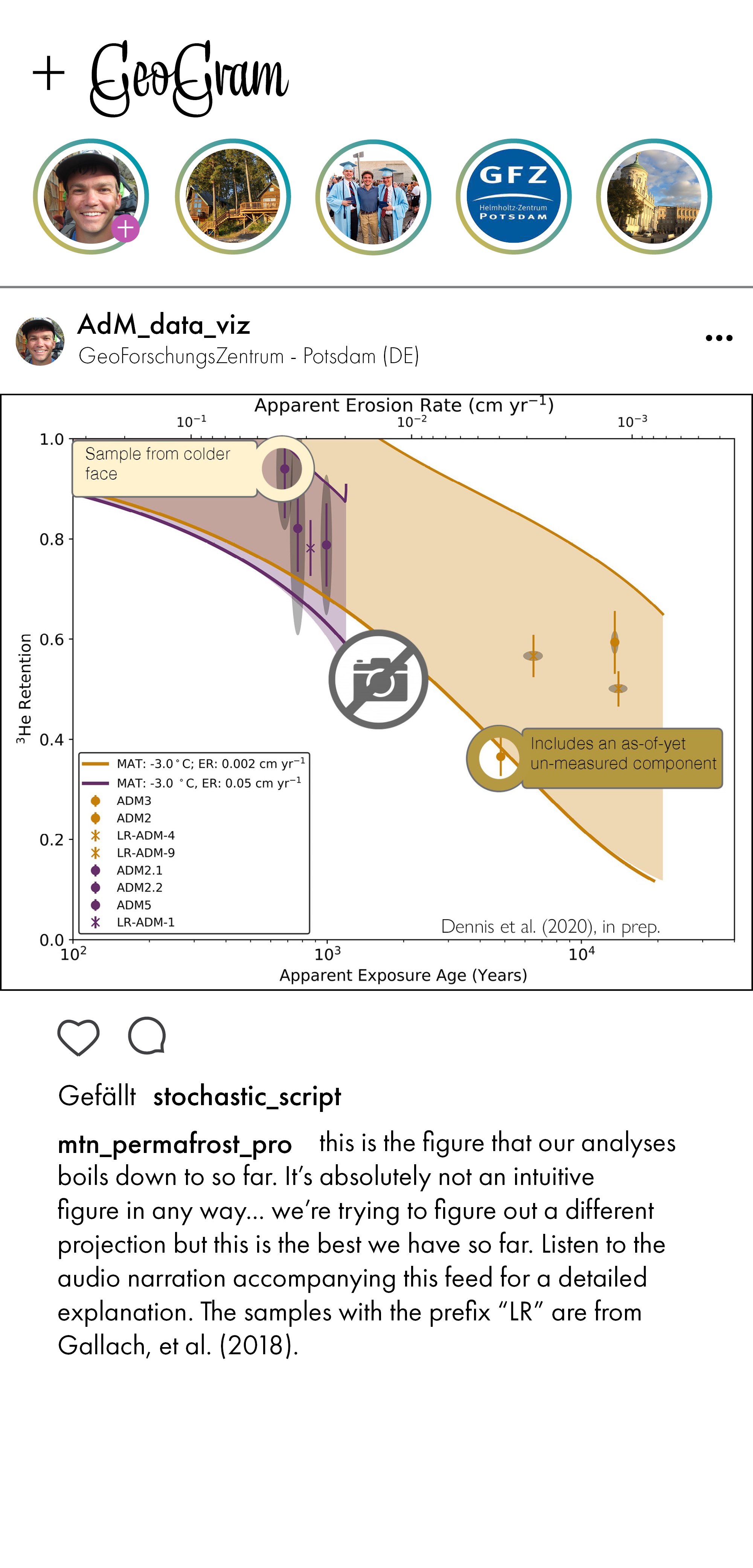
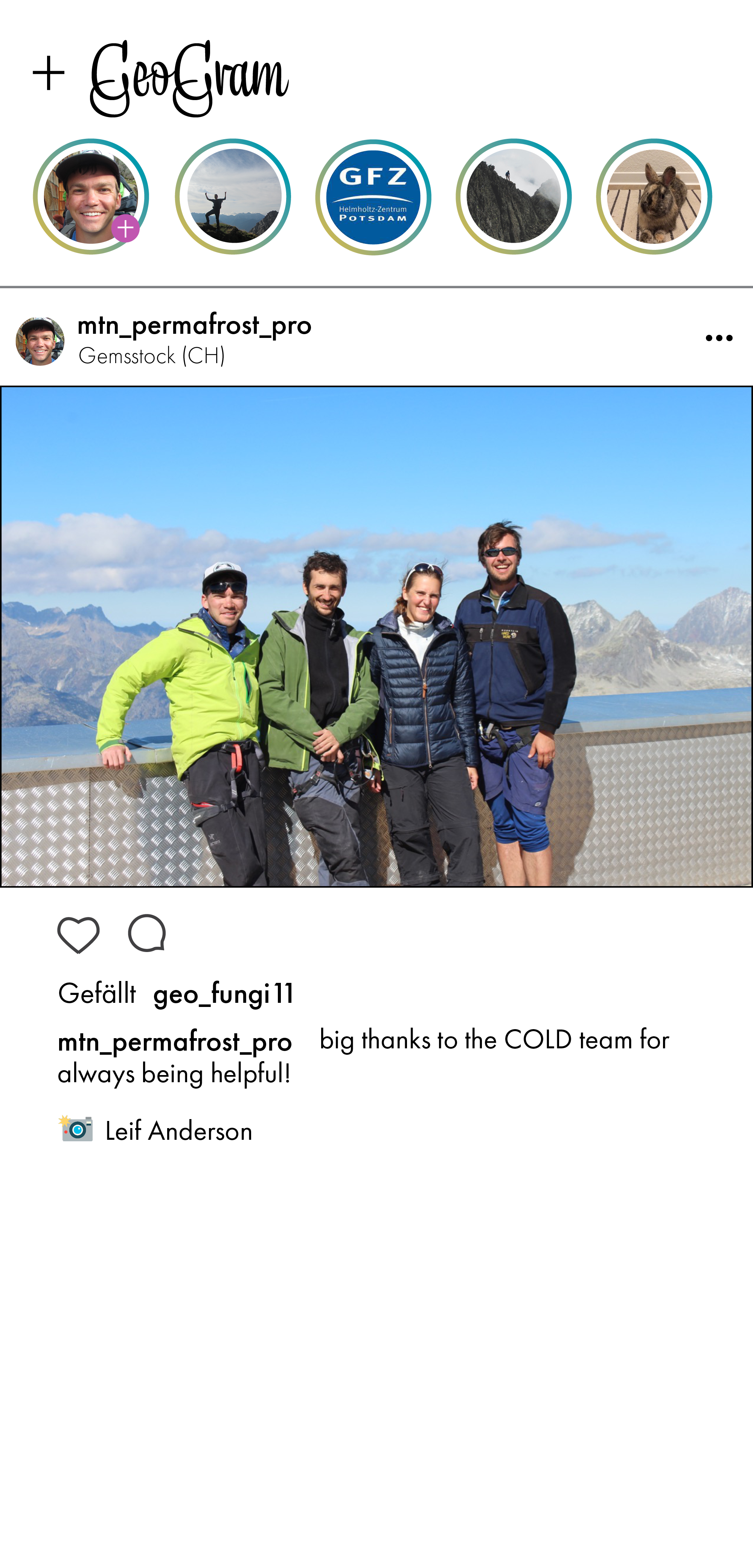
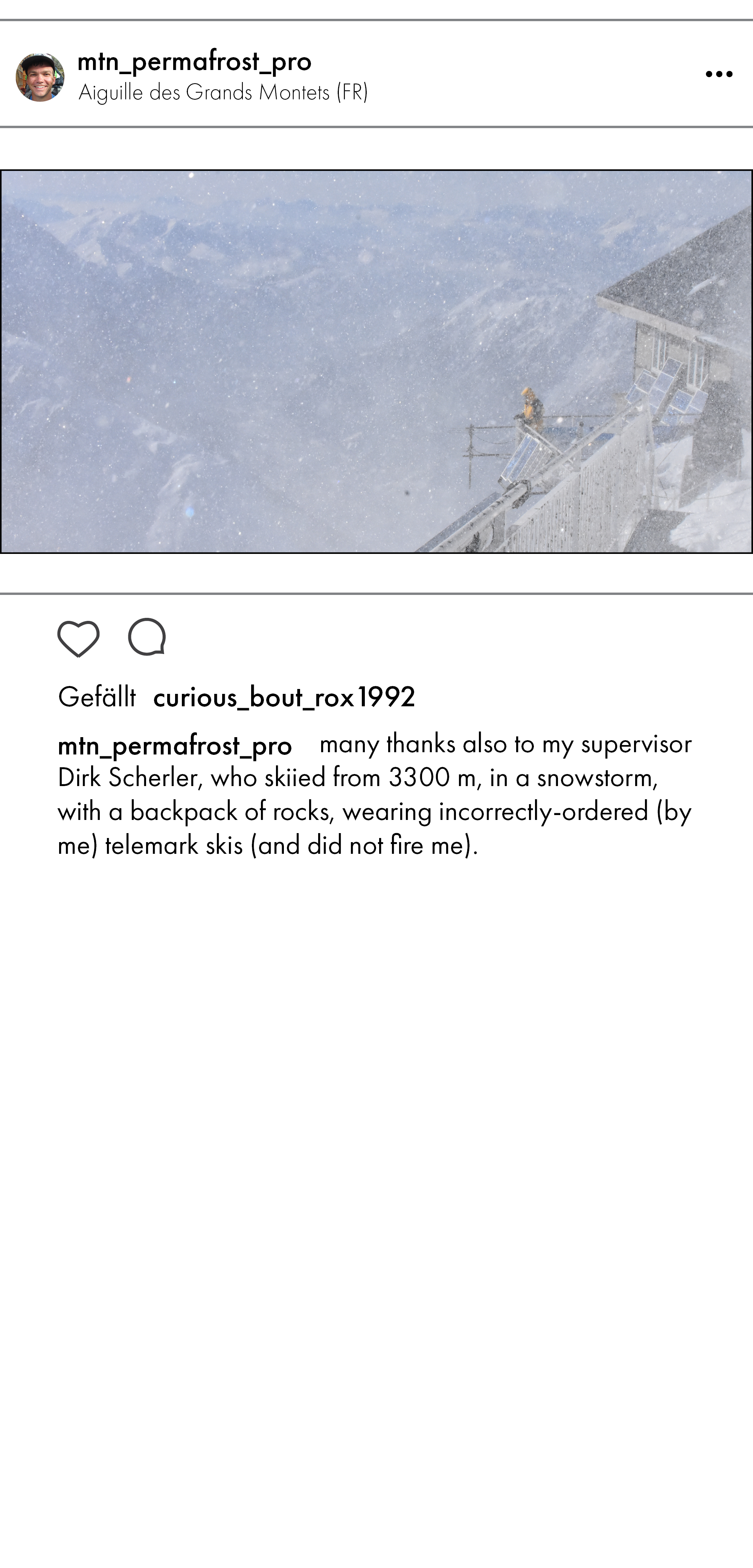
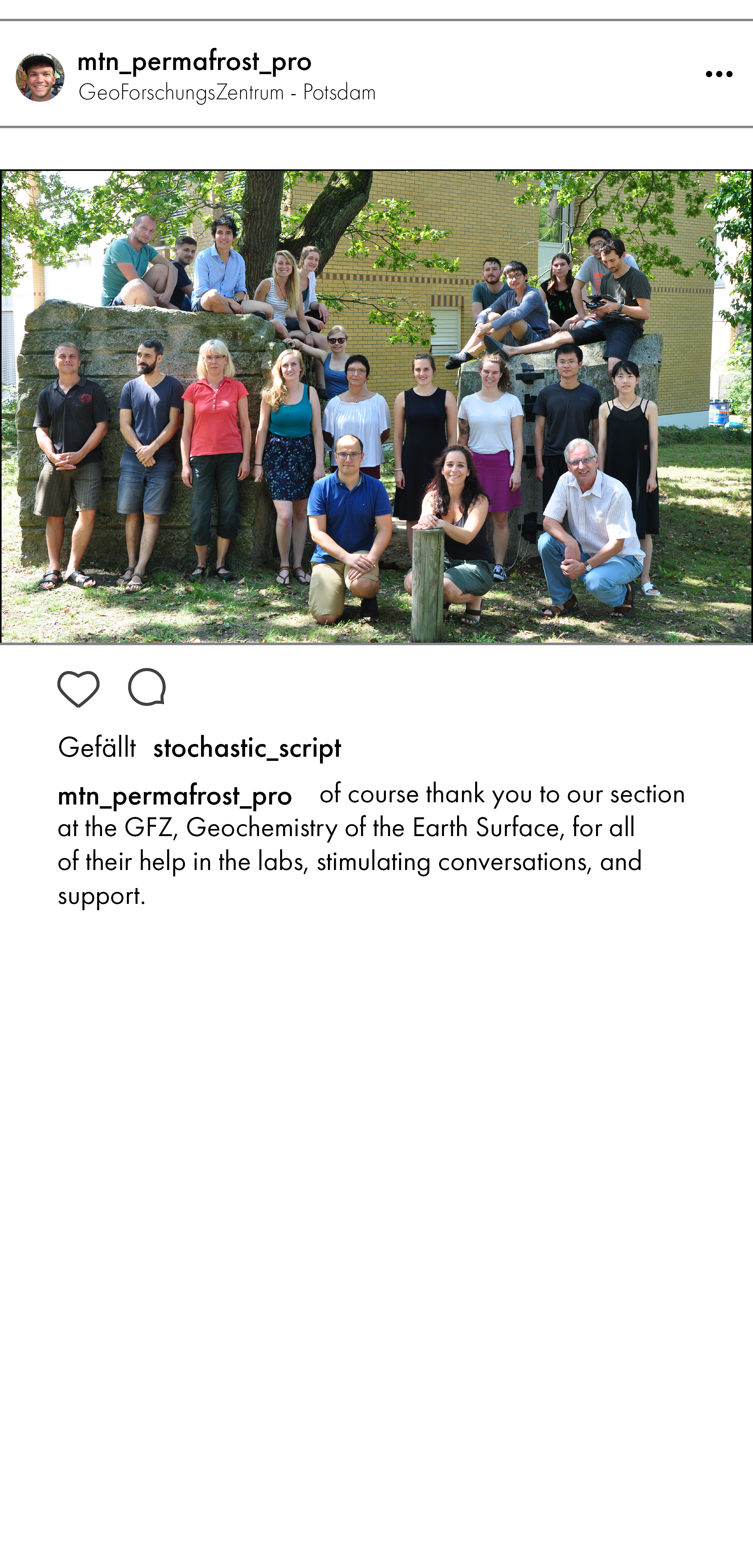
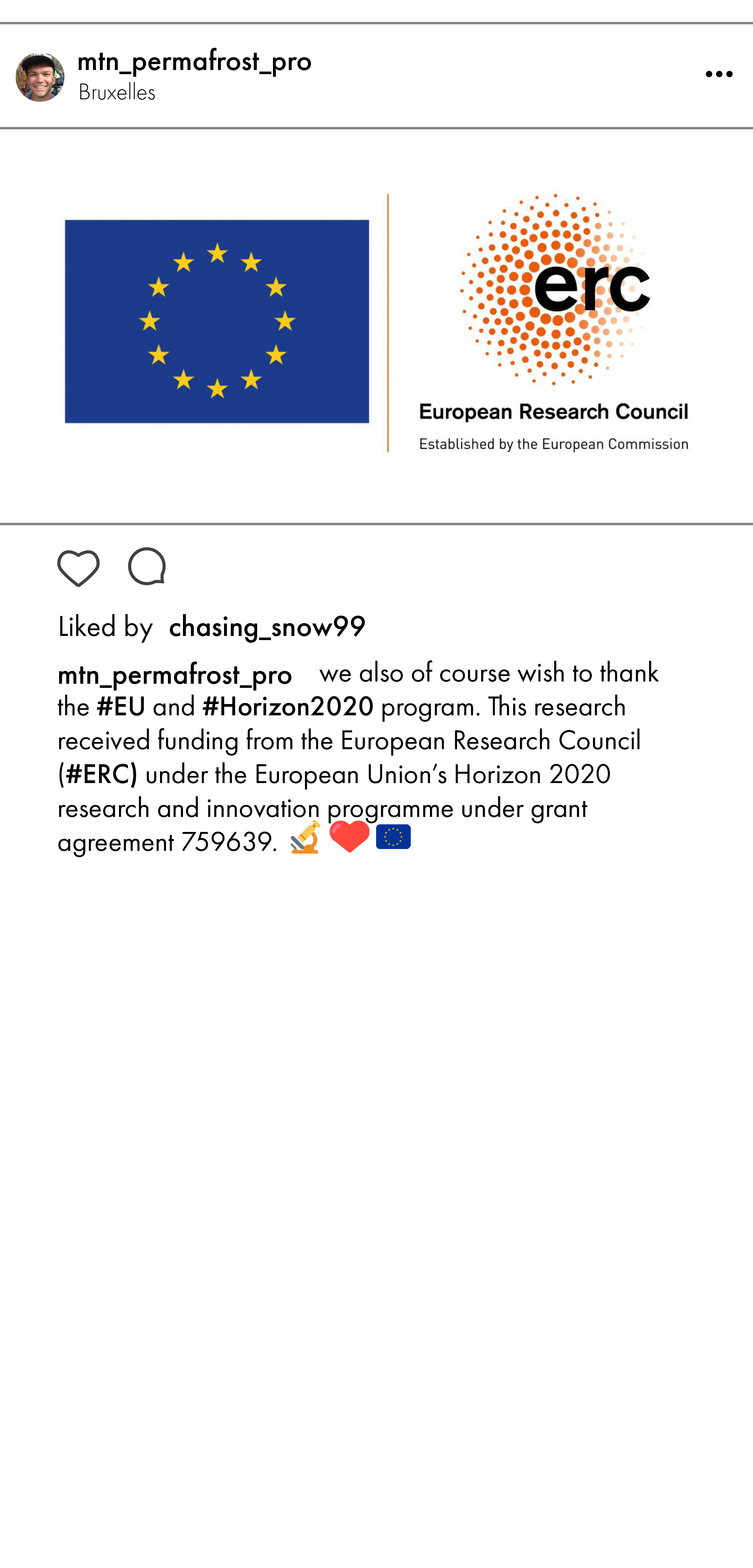
AGU Fall Meeting Poster (2019)
Poster presentation for the (in-person) AGU in 2019. The poster was presented in-person, and summarises the research from the first nine months of my PhD—the development of a numerical modeling framework for evaluating the temperature dependence of erosion. (Click image for abstract).
AGU Social Media Takeover
In spring 2019, I took over the AGU’s Instagram account for a week, and shared details of our research in the following videos.





